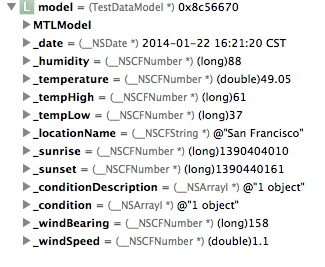- 鸿蒙Next-获取系统权限-获取麦克风权限
试水年华
鸿蒙Next开发Ark-TS语言Ark-TS语言鸿蒙华为
1.需要先在配置文件中,声明应用需要请求的权限,且设置需要使用的场景+使用原因"requestPermissions":[//申请的网络权限{"name":"ohos.permission.INTERNET"},{//申请麦克风权限"name":"ohos.permission.MICROPHONE","usedScene":{},//申请麦克风权限的原因"reason":"$string:rea
- 从 0 开始使用 cursor 开发一个移动端跨平台应用程序
沐怡旸
reactnative
1.安装必要的工具和环境在开始之前,确保你的开发环境已经安装了以下工具:a.安装Node.js和npmReactNative依赖Node.js和npm(NodePackageManager)。你可以从Node.js官网下载并安装最新版本。b.安装PythonReactNative的Android开发需要Python。确保你已经安装了Python2.7或Python3.x。c.安装Java环境Rea
- 华为OD机试九日集训第2期 - 按算法分类,由易到难,循序渐进,提升编程能力和解题技巧,从而提高机试通过率
哪 吒
搬砖工逆袭Java架构师华为od算法九日集训Java
目录一、适合人群二、本期训练时间三、如何参加四、数据结构与算法大纲五、华为OD九日集训第1期第1天、逻辑分析第2天、队列第3天、双指针第4天栈第5天滑动窗口第6天、二叉树第7天、并查集第8天、矩阵第9天、贪心算法六、国内直接使用满血ChatGPT4o、o1、o3-mini-high、Claude3.7Sonnet、满血DeepSeekR11、纯原版ChatGPT、Claude2、技术支持3、支持所
- 更好地进行SQL问题回答的提示技术
bavDHAUO
sqloracle数据库python
在SQL问题回答过程中,提示工程是生成正确SQL查询的关键。通过使用create_sql_query_chain,我们将探讨如何优化提示技术,以改善SQL查询生成。本文将重点讲述如何在提示中获得针对特定数据库的信息。技术背景介绍在使用自然语言生成SQL查询时,数据库的特定方言、表结构信息以及少量示例都能够显著提高生成查询的准确性。通过LangChain库,我们可以优化这些提示来帮助模型更好地理解和
- iOS下的WiFi开发
Landen2011
iosobjective-c开发语言macos
iOS下Wi-Fi开发需要添加依赖库SystemConfiguration.framework,在需要使用Wi-Fi信息的控制器下引入头文件#import1,Wi-Fi热点获取+(NSString*)currentWifiSSID{#ifTARGET_OS_SIMULATORreturn@"(simulator)";#elseNSArray*ifs=(__bridgeid)CNCopySuppor
- 模型部署实战:PyTorch生产化指南
小诸葛IT课堂
pytorch人工智能python
一、为什么要做模型部署?模型部署是将训练好的模型投入实际应用的关键步骤,涉及:模型格式转换(TorchScript/ONNX)性能优化(量化/剪枝)构建API服务移动端集成本章使用ResNet18实现图像分类,并演示完整部署流程。二、模型转换:TorchScript与ONNX1.准备预训练模型importtorchimporttorchvision#加载预训练模型model=torc
- C++基础匿名对象,友元和常成员(const)
没有百宝袋的哆啦A梦
c++javajvm
目录学习内容:1.匿名对象2.友元2.1友元的引入2.2友元函数2.3友元类2.4友元的总结3.常成员(const)3.1常成员的引入3.2常成员函数3.3常对象3.4mutable关键字3.5常函数3.6关于C/C++中const的使用(面试题)学习内容:1.匿名对象1>所谓匿名对象,就是没有名字的对象,生命周期只在当前语句内,所以可以理解成时一个将亡值2>定义格式:直接调用类的构造函数3>使用
- C#自动升级系统完整实现教程
Jay星晴
本文还有配套的精品资源,点击获取简介:在C#开发中,实现软件自动升级机制是确保用户使用最新程序版本的重要技术手段。本文将详细介绍自动升级的基本概念、实现步骤、相关技术以及实际操作中需要关注的事项。内容涵盖如何通过网络请求检测版本更新、下载更新包、执行安装过程以及重启应用,同时强调安全性和用户体验等关键点。1.自动升级基本概念自动升级是什么自动升级是软件开发中的一种重要机制,允许软件在无需用户干预的
- 智能家居产品很酷,记住这3个使用规则,让生活更安全
宛如清风
智能家居产品安全智能家居使用原则SCA智能家居安全物联网产品智能手表智能门锁SCA
前言:在急于拥抱物联网设备的过程中,我们不能为了增加便利而以隐私和安全为代价。一个万物互联的世界来了。物联网革命改善了我们的家庭生活,为我们提供了从智能茶壶到智能洗衣机再到智能冰箱的各种智能家用电器,同时我们还拥有智能门铃和门锁、智能手机、智能手表等物联网设备,这使我们可以随时可查看追踪孩子位置的智能手表,以及追踪健康状况的健身追踪器。所有这些能使生活更加轻松,但这并不一定意味着它使我们的生活更加
- Goose开源程序本地机上 AI 代理,能够从头到尾自动执行复杂的开发任务。Goose 不仅可以提供代码建议,还可以自主构建整个项目、编写和执行代码、调试故障、编排工作流程以及与外部 API 交互
struggle2025
策略模式人工智能交互
一、软件下载文末提供程序和源码下载Goose是您的机上AI代理,能够从头到尾自动执行复杂的开发任务。Goose不仅可以提供代码建议,还可以自主构建整个项目、编写和执行代码、调试故障、编排工作流程以及与外部API交互。无论您是在构建想法原型、优化现有代码,还是管理复杂的工程管道,goose都能适应您的工作流程并精确执行任务。goose专为实现最大的灵活性而设计,可与任何LLMAPI配合使用,并与支持
- 【搞定Go语言】第3天1:Go语言操作MySQL
就叫一片白纸
Go语言
MySQL是业界常用的关系型数据库,本文介绍了Go语言如何操作MySQL数据库。Go操作MySQL连接Go语言中的database/sql包提供了保证SQL或类SQL数据库的泛用接口,并不提供具体的数据库驱动。使用database/sql包时必须注入(至少)一个数据库驱动。我们常用的数据库基本上都有完整的第三方实现。例如:MySQL驱动下载依赖goget-ugithub.com/go-sql-dr
- 详解如何通过Python的BeautifulSoup爬虫+NLP标签提取+Dijkstra规划路径和KMeans聚类分析帮助用户规划旅行路线
mosquito_lover1
pythonbeautifulsoup爬虫kmeans自然语言处理
系统模块:数据采集模块(爬虫):负责从目标网站抓取地点数据(如名称、经纬度、描述等)数据预处理模块(标签算法):对抓取到的地点数据进行清洗和分类。根据地点特征(如经纬度、描述文本)打上标签(如“适合家庭”、“适合冒险”)。地理数据处理模块(地图API):使用地图API获取地点的详细信息(如地址、距离、路径等)。计算地点之间的距离或路径。路径规划模块:根据用户输入的起点和终点,规划最优路径。支持多种
- go clickhouse query
leijmdas
golangclickhouse开发语言
在Go中使用clickhouse-go查询ClickHouse数据库非常简单。以下是一个完整的示例,展示如何连接ClickHouse并执行查询操作。1.安装依赖首先,安装clickhouse-go:bash复制goget-ugithub.com/ClickHouse/clickhouse-go/v22.示例代码以下是一个完整的示例,展示如何连接ClickHouse并执行查询操作。go复制packa
- Go操作MySQL
可能只会写BUG
golangmysqlgolangmysql开发语言
Go操作MySQL类别:Golang数据库操作连接Go语言中的database/sql包提供了保证SQL或类SQL数据库的泛用接口,并不提供具体的数据库驱动。使用database/sql包时必须注入(至少)一个数据库驱动。我们常用的数据库基本上都有完整的第三方实现。例如:MySQL驱动下载依赖goget-ugithub.com/go-sql-driver/mysql使用MySQL驱动funcOpe
- 【愚公系列】《高效使用DeepSeek》020-专业术语解释
愚公搬代码
愚公系列-书籍专栏人工智能AIAgentdeepseek学习
【技术大咖愚公搬代码:全栈专家的成长之路,你关注的宝藏博主在这里!】开发者圈持续输出高质量干货的"愚公精神"践行者——全网百万开发者都在追更的顶级技术博主!江湖人称"愚公搬代码",用七年如一日的精神深耕技术领域,以"挖山不止"的毅力为开发者们搬开知识道路上的重重阻碍!【行业认证·权威头衔】✔华为云天团核心成员:特约编辑/云享专家/开发者专家/产品云测专家✔开发者社区全满贯:CSDN博客&商业化双料
- iOS发布app到App Store教程
Cloudox_
iOS拾遗iOS之海iOS发布App发布证书AppStore
要发布首先需要发布证书,其获取和安装的基本流程和真机调试证书一致,关于真机调试证书的获取和使用可以参考这篇文章。不过现在Xcode7不需要真机调试证书也可实现真机调试了,可以参考这篇文章。要获取证书,以及发布app,都需要开发者账号,开发者账号分为个人和企业两种,在https://developer.apple.com/programs/这个网站注册。关于申请开发者账号,有时间再写一篇文章好啦。获
- TypeScript语言的计算机视觉
苏墨瀚
包罗万象golang开发语言后端
使用TypeScript进行计算机视觉:一个现代化的探索引言随着人工智能和机器学习的快速发展,计算机视觉(ComputerVision)成为了一个极具活力的研究领域。计算机视觉旨在使计算机能够“看”和“理解”数字图像或视频中的内容。近年来,TypeScript作为一种现代化的编程语言,因其类型安全和更好的开发体验,逐渐在前端和后端开发中得到了广泛应用。本文将探讨如何使用TypeScript进行计算
- Objective-C语言的调试工具
苏墨瀚
包罗万象golang开发语言后端
Objective-C调试工具详解Objective-C是一种面向对象的编程语言,广泛应用于macOS和iOS开发。由于其动态性和灵活性,Objective-C在开发过程中可能会遇到各种复杂的调试问题。为了帮助开发者更高效地定位和解决问题,Objective-C提供了多种调试工具和技术。本文将详细介绍这些工具,并探讨如何在实际开发中使用它们。1.Xcode调试器Xcode是苹果官方提供的集成开发环
- MyBatis 学习经验分享
吱屋猪_
mybatis学习经验分享
MyBatis是一个广泛使用的Java持久层框架,它为开发者提供了灵活、易用的数据库操作方式。与Hibernate等全自动化ORM(对象关系映射)框架不同,MyBatis采用了更精细的控制,允许开发者在SQL语句和Java对象之间进行映射。通过它,开发者可以直接编写SQL查询,灵活处理数据库操作,并且仍然享受到框架提供的简化工作流程。以下是我在学习MyBatis过程中的一些经验分享。1.理解MyB
- 第三:go 操作mysql
小画家~
gingolangmysql开发语言
Go操作MySQL连接Go语言中的database/sql包提供了保证SQL或类SQL数据库的泛用接口,并不提供具体的数据库驱动。使用database/sql包时必须注入(至少)一个数据库驱动。我们常用的数据库基本上都有完整的第三方实现。例如:MySQL驱动下载依赖goget-ugithub.com/go-sql-driver/mysql使用MySQL驱动funcOpen(driverName,d
- Spring Boot 启动参数终极解析:如何优雅地控制你的应用?
jiajia651304
springboot后端java
SpringBoot启动参数终极解析:如何优雅地控制你的应用?在使用SpringBoot开发应用时,我们通常需要根据不同的环境(开发、测试、生产)或特定需求调整启动参数,例如:修改默认端口指定不同的配置文件控制JVM内存大小传递自定义参数那么,SpringBoot提供了哪些方式来配置这些启动参数?今天我们就来详细解析SpringBoot启动参数的各种用法,并附带代码示例,让你可以灵活掌控应用的启动
- Python函数专题:引用传参
圣逸
从入门到精通Python语言python开发语言Python入门精通python数据结构
在Python编程中,函数是一个非常重要的概念。函数不仅能提高代码的可重用性,还能够使代码结构更加清晰。在函数的设计和使用中,参数的传递方式是一个关键的因素。Python中的参数传递有两种主要形式:值传递和引用传递。虽然Python的参数传递机制有时被称为"引用传递",但实际上它更接近于"对象引用传递"。本文将深入探讨Python中的引用传参及其相关概念。一、基本概念在讨论引用传参之前,首先要理解
- 下载码怎么使用
小小河马、
java
CSDN下载码是通过用户完成一些既定的任务而赠送给用户的。在完成一些要求的任务后,系统会送出一个下载码。用户可以使用该下载码去下载需要的资源。注意下载码是有有效期的,一旦收到了下载码请尽快使用。使用下载码只能下载不需要积分的资源,如果需要积分的资源,下载码是没有用的。博客积分是CSDN对用户努力的认可和奖励,也是衡量博客水平的重要标准。博客等级也将由博客积分唯一决定。积分规则具体如下:1、每发布一
- Git使用规范
糖心何包蛋爱编程
gitjava经验分享intellij-idea
摘要本文主要讲解Git提交需遵循相应规范。PullRequest方面,一个PR专注一件事。信息填写中,Title分仅含一个commit和多个commit的情况;Content也有要求。还有其它规范,如连接issue,pr完成后要妥善处理,以保证代码提交的高效与规范。开发统一使用git进行版本管理,使用gitsubmodule实现代码模块化。在使用git进行提交和push等操作时需要遵循以下规范。一
- 工厂函数详解:概念、目的与作用
漫谈网络
网络技术进阶通途工厂函数mininetsdnnfv网络
一、什么是工厂函数?工厂函数(FactoryFunction)是一种设计模式,其核心是通过一个函数来创建并返回对象,而不是直接使用new或构造函数实例化对象。它封装了对象的创建过程,使代码更灵活、可维护。二、工厂函数的目的与作用目的作用解耦对象创建逻辑将对象的创建与使用分离,调用者无需关心对象的具体实现细节。延迟实例化仅在需要时创建对象,避免资源浪费(如内存、CPU)。支持动态参数根据输入参数返回
- 01.AJAX 概念和 axios 使用
Lv547
#AJAXajax前端javascript
01.AJAX概念和axios使用1.什么是AJAX?使用浏览器的XMLHttpRequest对象与服务器通信浏览器网页中,使用AJAX技术(XHR对象)发起获取省份列表数据的请求,服务器代码响应准备好的省份列表数据给前端,前端拿到数据数组以后,展示到网页2.什么是服务器?可以暂时理解为提供数据的一台电脑3.为何学AJAX?以前我们的数据都是写在代码里固定的,无法随时变化现在我们的数据可以从服务器
- Springboot中的@ConditionalOnBean注解:使用指南与最佳实践
上官美丽
javaspringbootjavamybatis
在使用SpringBoot进行开发时,大家应该都听说过条件注解(ConditionalAnnotations)。其中的@ConditionalOnBean注解就很有趣,它帮助开发者在特定条件下创建和注入Bean,让你的应用更加灵活。今天就来聊聊这个注解的使用场景、工作原理以及最佳实践!什么是@ConditionalOnBean注解?@ConditionalOnBean是SpringBoot中提供的
- Django ORM自定义排序的实用示例
上官美丽
技术分享django数据库sqlite
在使用Django进行开发时,ORM(对象关系映射)是一个非常强大的工具。它让我们可以用Python代码直接操作数据库,而不需要写SQL语句。当我们需要对数据进行排序时,DjangoORM同样提供了丰富的功能。今天,我们就来聊聊如何在Django中实现自定义排序,帮助你更好地管理和展示数据!理解DjangoORM的排序功能DjangoORM提供了order_by()方法,允许我们对查询集进行排序。
- Maven Deploy Plugin如何使用?
上官美丽
javamavenjava
在Java开发中,Maven是一个非常重要的构建工具。它不仅可以管理项目的依赖关系,还能帮助我们打包和发布项目。在Maven中,deploy插件是一个很实用的功能,它可以将构建好的项目发布到远程仓库。今天,就来聊聊如何使用MavenDeployPlugin,帮助你更好地掌握这个工具!什么是MavenDeployPlugin?MavenDeployPlugin是Maven的一部分,主要用于将构建好的
- Qt 多线程设计:死循环与信号槽的权衡
吃面不喝汤66
qt开发语言
在开发音视频播放器时,多线程设计是不可避免的挑战。音频和视频的解码、播放需要高效运行,同时还要与主线程或其他线程同步,例如通过信号通知播放进度。本文基于一个实际案例,分析了两种线程设计在死循环和信号槽使用中的表现,探讨其原因,并给出选择建议。问题表现我在实现音频播放线程时,遇到了一个问题:主线程通过QMetaObject::invokeMethod调用terminateDecode无法终止音频线程
- [星球大战]阿纳金的背叛
comsci
本来杰迪圣殿的长老是不同意让阿纳金接受训练的.........
但是由于政治原因,长老会妥协了...这给邪恶的力量带来了机会
所以......现代的地球联邦接受了这个教训...绝对不让某些年轻人进入学院
- 看懂它,你就可以任性的玩耍了!
aijuans
JavaScript
javascript作为前端开发的标配技能,如果不掌握好它的三大特点:1.原型 2.作用域 3. 闭包 ,又怎么可以说你学好了这门语言呢?如果标配的技能都没有撑握好,怎么可以任性的玩耍呢?怎么验证自己学好了以上三个基本点呢,我找到一段不错的代码,稍加改动,如果能够读懂它,那么你就可以任性了。
function jClass(b
- Java常用工具包 Jodd
Kai_Ge
javajodd
Jodd 是一个开源的 Java 工具集, 包含一些实用的工具类和小型框架。简单,却很强大! 写道 Jodd = Tools + IoC + MVC + DB + AOP + TX + JSON + HTML < 1.5 Mb
Jodd 被分成众多模块,按需选择,其中
工具类模块有:
jodd-core &nb
- SpringMvc下载
120153216
springMVC
@RequestMapping(value = WebUrlConstant.DOWNLOAD)
public void download(HttpServletRequest request,HttpServletResponse response,String fileName) {
OutputStream os = null;
InputStream is = null;
- Python 标准异常总结
2002wmj
python
Python标准异常总结
AssertionError 断言语句(assert)失败 AttributeError 尝试访问未知的对象属性 EOFError 用户输入文件末尾标志EOF(Ctrl+d) FloatingPointError 浮点计算错误 GeneratorExit generator.close()方法被调用的时候 ImportError 导入模块失
- SQL函数返回临时表结构的数据用于查询
357029540
SQL Server
这两天在做一个查询的SQL,这个SQL的一个条件是通过游标实现另外两张表查询出一个多条数据,这些数据都是INT类型,然后用IN条件进行查询,并且查询这两张表需要通过外部传入参数才能查询出所需数据,于是想到了用SQL函数返回值,并且也这样做了,由于是返回多条数据,所以把查询出来的INT类型值都拼接为了字符串,这时就遇到问题了,在查询SQL中因为条件是INT值,SQL函数的CAST和CONVERST都
- java 时间格式化 | 比较大小| 时区 个人笔记
7454103
javaeclipsetomcatcMyEclipse
个人总结! 不当之处多多包含!
引用 1.0 如何设置 tomcat 的时区:
位置:(catalina.bat---JAVA_OPTS 下面加上)
set JAVA_OPT
- 时间获取Clander的用法
adminjun
Clander时间
/**
* 得到几天前的时间
* @param d
* @param day
* @return
*/
public static Date getDateBefore(Date d,int day){
Calend
- JVM初探与设置
aijuans
java
JVM是Java Virtual Machine(Java虚拟机)的缩写,JVM是一种用于计算设备的规范,它是一个虚构出来的计算机,是通过在实际的计算机上仿真模拟各种计算机功能来实现的。Java虚拟机包括一套字节码指令集、一组寄存器、一个栈、一个垃圾回收堆和一个存储方法域。 JVM屏蔽了与具体操作系统平台相关的信息,使Java程序只需生成在Java虚拟机上运行的目标代码(字节码),就可以在多种平台
- SQL中ON和WHERE的区别
avords
SQL中ON和WHERE的区别
数据库在通过连接两张或多张表来返回记录时,都会生成一张中间的临时表,然后再将这张临时表返回给用户。 www.2cto.com 在使用left jion时,on和where条件的区别如下: 1、 on条件是在生成临时表时使用的条件,它不管on中的条件是否为真,都会返回左边表中的记录。
- 说说自信
houxinyou
工作生活
自信的来源分为两种,一种是源于实力,一种源于头脑.实力是一个综合的评定,有自身的能力,能利用的资源等.比如我想去月亮上,要身体素质过硬,还要有飞船等等一系列的东西.这些都属于实力的一部分.而头脑不同,只要你头脑够简单就可以了!同样要上月亮上,你想,我一跳,1米,我多跳几下,跳个几年,应该就到了!什么?你说我会往下掉?你笨呀你!找个东西踩一下不就行了吗?
无论工作还
- WEBLOGIC事务超时设置
bijian1013
weblogicjta事务超时
系统中统计数据,由于调用统计过程,执行时间超过了weblogic设置的时间,提示如下错误:
统计数据出错!
原因:The transaction is no longer active - status: 'Rolling Back. [Reason=weblogic.transaction.internal
- 两年已过去,再看该如何快速融入新团队
bingyingao
java互联网融入架构新团队
偶得的空闲,翻到了两年前的帖子
该如何快速融入一个新团队,有所感触,就记下来,为下一个两年后的今天做参考。
时隔两年半之后的今天,再来看当初的这个博客,别有一番滋味。而我已经于今年三月份离开了当初所在的团队,加入另外的一个项目组,2011年的这篇博客之后的时光,我很好的融入了那个团队,而直到现在和同事们关系都特别好。大家在短短一年半的时间离一起经历了一
- 【Spark七十七】Spark分析Nginx和Apache的access.log
bit1129
apache
Spark分析Nginx和Apache的access.log,第一个问题是要对Nginx和Apache的access.log文件进行按行解析,按行解析就的方法是正则表达式:
Nginx的access.log解析正则表达式
val PATTERN = """([^ ]*) ([^ ]*) ([^ ]*) (\\[.*\\]) (\&q
- Erlang patch
bookjovi
erlang
Totally five patchs committed to erlang otp, just small patchs.
IMO, erlang really is a interesting programming language, I really like its concurrency feature.
but the functional programming style
- log4j日志路径中加入日期
bro_feng
javalog4j
要用log4j使用记录日志,日志路径有每日的日期,文件大小5M新增文件。
实现方式
log4j:
<appender name="serviceLog"
class="org.apache.log4j.RollingFileAppender">
<param name="Encoding" v
- 读《研磨设计模式》-代码笔记-桥接模式
bylijinnan
java设计模式
声明: 本文只为方便我个人查阅和理解,详细的分析以及源代码请移步 原作者的博客http://chjavach.iteye.com/
/**
* 个人觉得关于桥接模式的例子,蜡笔和毛笔这个例子是最贴切的:http://www.cnblogs.com/zhenyulu/articles/67016.html
* 笔和颜色是可分离的,蜡笔把两者耦合在一起了:一支蜡笔只有一种
- windows7下SVN和Eclipse插件安装
chenyu19891124
eclipse插件
今天花了一天时间弄SVN和Eclipse插件的安装,今天弄好了。svn插件和Eclipse整合有两种方式,一种是直接下载插件包,二种是通过Eclipse在线更新。由于之前Eclipse版本和svn插件版本有差别,始终是没装上。最后在网上找到了适合的版本。所用的环境系统:windows7JDK:1.7svn插件包版本:1.8.16Eclipse:3.7.2工具下载地址:Eclipse下在地址:htt
- [转帖]工作流引擎设计思路
comsci
设计模式工作应用服务器workflow企业应用
作为国内的同行,我非常希望在流程设计方面和大家交流,刚发现篇好文(那么好的文章,现在才发现,可惜),关于流程设计的一些原理,个人觉得本文站得高,看得远,比俺的文章有深度,转载如下
=================================================================================
自开博以来不断有朋友来探讨工作流引擎该如何
- Linux 查看内存,CPU及硬盘大小的方法
daizj
linuxcpu内存硬盘大小
一、查看CPU信息的命令
[root@R4 ~]# cat /proc/cpuinfo |grep "model name" && cat /proc/cpuinfo |grep "physical id"
model name : Intel(R) Xeon(R) CPU X5450 @ 3.00GHz
model name :
- linux 踢出在线用户
dongwei_6688
linux
两个步骤:
1.用w命令找到要踢出的用户,比如下面:
[root@localhost ~]# w
18:16:55 up 39 days, 8:27, 3 users, load average: 0.03, 0.03, 0.00
USER TTY FROM LOGIN@ IDLE JCPU PCPU WHAT
- 放手吧,就像不曾拥有过一样
dcj3sjt126com
内容提要:
静悠悠编著的《放手吧就像不曾拥有过一样》集结“全球华语世界最舒缓心灵”的精华故事,触碰生命最深层次的感动,献给全世界亿万读者。《放手吧就像不曾拥有过一样》的作者衷心地祝愿每一位读者都给自己一个重新出发的理由,将那些令你痛苦的、扛起的、背负的,一并都放下吧!把憔悴的面容换做一种清淡的微笑,把沉重的步伐调节成春天五线谱上的音符,让自己踏着轻快的节奏,在人生的海面上悠然漂荡,享受宁静与
- php二进制安全的含义
dcj3sjt126com
PHP
PHP里,有string的概念。
string里,每个字符的大小为byte(与PHP相比,Java的每个字符为Character,是UTF8字符,C语言的每个字符可以在编译时选择)。
byte里,有ASCII代码的字符,例如ABC,123,abc,也有一些特殊字符,例如回车,退格之类的。
特殊字符很多是不能显示的。或者说,他们的显示方式没有标准,例如编码65到哪儿都是字母A,编码97到哪儿都是字符
- Linux下禁用T440s,X240的一体化触摸板(touchpad)
gashero
linuxThinkPad触摸板
自打1月买了Thinkpad T440s就一直很火大,其中最让人恼火的莫过于触摸板。
Thinkpad的经典就包括用了小红点(TrackPoint)。但是小红点只能定位,还是需要鼠标的左右键的。但是自打T440s等开始启用了一体化触摸板,不再有实体的按键了。问题是要是好用也行。
实际使用中,触摸板一堆问题,比如定位有抖动,以及按键时会有飘逸。这就导致了单击经常就
- graph_dfs
hcx2013
Graph
package edu.xidian.graph;
class MyStack {
private final int SIZE = 20;
private int[] st;
private int top;
public MyStack() {
st = new int[SIZE];
top = -1;
}
public void push(i
- Spring4.1新特性——Spring核心部分及其他
jinnianshilongnian
spring 4.1
目录
Spring4.1新特性——综述
Spring4.1新特性——Spring核心部分及其他
Spring4.1新特性——Spring缓存框架增强
Spring4.1新特性——异步调用和事件机制的异常处理
Spring4.1新特性——数据库集成测试脚本初始化
Spring4.1新特性——Spring MVC增强
Spring4.1新特性——页面自动化测试框架Spring MVC T
- 配置HiveServer2的安全策略之自定义用户名密码验证
liyonghui160com
具体从网上看
http://doc.mapr.com/display/MapR/Using+HiveServer2#UsingHiveServer2-ConfiguringCustomAuthentication
LDAP Authentication using OpenLDAP
Setting
- 一位30多的程序员生涯经验总结
pda158
编程工作生活咨询
1.客户在接触到产品之后,才会真正明白自己的需求。
这是我在我的第一份工作上面学来的。只有当我们给客户展示产品的时候,他们才会意识到哪些是必须的。给出一个功能性原型设计远远比一张长长的文字表格要好。 2.只要有充足的时间,所有安全防御系统都将失败。
安全防御现如今是全世界都在关注的大课题、大挑战。我们必须时时刻刻积极完善它,因为黑客只要有一次成功,就可以彻底打败你。 3.
- 分布式web服务架构的演变
自由的奴隶
linuxWeb应用服务器互联网
最开始,由于某些想法,于是在互联网上搭建了一个网站,这个时候甚至有可能主机都是租借的,但由于这篇文章我们只关注架构的演变历程,因此就假设这个时候已经是托管了一台主机,并且有一定的带宽了,这个时候由于网站具备了一定的特色,吸引了部分人访问,逐渐你发现系统的压力越来越高,响应速度越来越慢,而这个时候比较明显的是数据库和应用互相影响,应用出问题了,数据库也很容易出现问题,而数据库出问题的时候,应用也容易
- 初探Druid连接池之二——慢SQL日志记录
xingsan_zhang
日志连接池druid慢SQL
由于工作原因,这里先不说连接数据库部分的配置,后面会补上,直接进入慢SQL日志记录。
1.applicationContext.xml中增加如下配置:
<bean abstract="true" id="mysql_database" class="com.alibaba.druid.pool.DruidDataSourc


